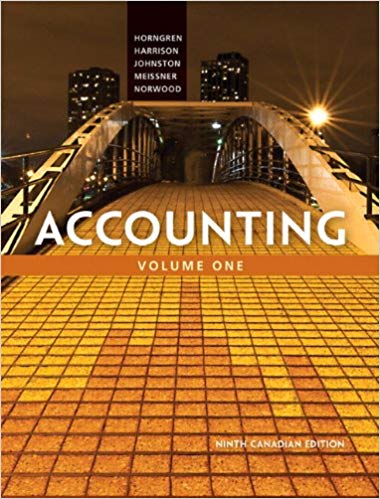Matiere Co. completed the following transactions during 2013 and 2014 2013 Dec. 31 Estimated that bad-debt expense
Question:
2013
Dec. 31 Estimated that bad-debt expense for the year was 3 percent of credit sales of $385,000 and recorded that amount as expense.
31 Made the closing entry for bad-debt expense.
2014
Mar. 26 Sold inventory to Mabel Sanders, $10,037.50, on credit terms of 2/10, n/30. Ignore cost of goods sold.
Sept. 15 Wrote off Mabel Sanders's account as uncollectible after repeated efforts to collect from her.
Nov. 10 Received $5,500 from Sanders, along with a letter stating her intention to pay her debt in full within 30 days. Reinstated her account in full.
Dec. 5 Received the balance due from Sanders.
31 Made a compound entry to write off the following accounts as uncollectible:
Curt Major, $2,200; Bernadette Lalonde, $962.50; Ellen Smart, $1,470.
31 Estimated that bad-debt expense for the year was 2 percent of credit sales of $490,000 and recorded the expense.
31 Made the closing entry for Bad-Debt Expense.
Required
1. Open three-column general ledger accounts for Allowance for Doubtful Accounts and Bad-Debt Expense. Keep running balances.
2. Record the transactions in the general journal and post to the two ledger accounts.
3. The December 31, 2014, balance of Accounts Receivable is $146,000. Show how Accounts Receivable would be reported at that date.
4. Assume that Matiere Co. begins aging accounts receivable on December 31, 2014. The balance in Accounts Receivable is $146,000, the credit balance in Allowance for Doubtful Accounts is $16,717.50 (use your calculations from Requirement 3), and the company estimates that $19,900 of its accounts receivable will prove uncollectible.
a. Make the adjusting entry for uncollectibles.
b. Show how Accounts Receivable will be reported on the December 31, 2014, balance sheet after this adjusting entry.
Accounts Receivable
Accounts receivables are debts owed to your company, usually from sales on credit. Accounts receivable is business asset, the sum of the money owed to you by customers who haven’t paid.The standard procedure in business-to-business sales is that... Balance Sheet
Balance sheet is a statement of the financial position of a business that list all the assets, liabilities, and owner’s equity and shareholder’s equity at a particular point of time. A balance sheet is also called as a “statement of financial...
Fantastic news! We've Found the answer you've been seeking!
Step by Step Answer:
Related Book For 

Accounting Volume 1
ISBN: 978-0132690096
9th Canadian edition
Authors: Charles T. Horngren, Walter T. Harrison, Jo Ann L. Johnston, Carol A. Meissner, Peter R. Norwood
Question Posted:





